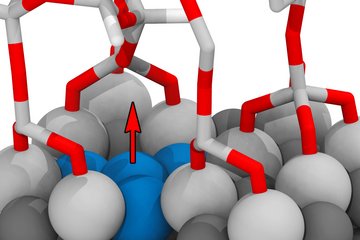All genres
2061.
Talk
The Texture Component Crystal Plasticity Finite Element Method. Keynote lecture at the Third GAMM (Society for Mathematics and Mechanics) Seminar on Microstructures, Stuttgart, Germany (2004)
2062.
Talk
Metallkundliche Ursachen und mechanische Auswirkungen unvollständiger Rekristallisation. Werkstoffausschuß des Vereins Deutscher Eisenhüttenleute, VDEh, Düsseldorf, German (2004)
2063.
Talk
Polycrystal Mechanics of Metals and Polymers - Experiments and Theory. Colloquium Lecture at the Massachusetts Institute of Technology, Cambridge, USA (2003)
2064.
Talk
Simulation of Texture and Anisotropy during Metal Forming with Respect to Scaling Aspects. 1st Colloquium Process Scaling, Bremen, Germany (2003)
2065.
Talk
Simulation of Texture and Anisotropy during Metal Forming with Respect to Scaling Aspects. Lecture at the 1st Colloquium on Process Scaling, Bremen (2003)
2066.
Talk
SMM Conference. 16th International Conference on Soft Magnetic Matter, MPI Düsseldorf (2003)
2067.
Talk
Investigation of Nano Indentation Pile-Up Patterns in Copper Single Crystals. Euromat 2003, Lausanne, Schweiz (2003)
2068.
Talk
Polycrystal Mechanics in Experiment and Theory. Keynote lecture at the Breitnau Materials Conference, Breitnau (2003)
2069.
Talk
Polycrystal Mechanics in Experiment and Theory. NATO Conferece, Freiburg (2003)
2070.
Talk
Microstructure mechanics: Investigation on deformation behaviour of grain boundaries. Plasticity 2003 (Keynote lecture), Québec, Canada (2003)
2071.
Talk
Polycrystal Mechanics in Experiment and Theory. Meeting, Massachusetts Institute of Technology, Cambridge, USA (2003)
2072.
Talk
Texture Conference. Modern Texture Research on Engineering Materials, MPIE, Düsseldorf, Germany (2003)
2073.
Talk
Experiment und Theorie der Oberflächen- und Polykristallmechanik. Kolloquiumsvortrag an der Technischen Universität, Hamburg-Harburg (2003)
2074.
Talk
Experiments and Theory of Surface- and Polycrystal Mechanics. Colloquium Lecture at the Technical University of Hamburg-Harburg, Hamburg-Harburg (2003)
2075.
Talk
Texturen und Kristallmechanik. Kolloquium, TU Darmstadt (2003)
2076.
Talk
Textures and Crystal Mechanics. Colloquium Lecture at the Materials Department at the Technical University of Darmstadt, Darmstadt (2003)
2077.
Talk
Slip system determination by rolling texture measurements around the strength peak temperature in a Fe3Al-based alloy. Intern. Conf. on Strength of Materials (ICSMA 13), Budapest, Hungary (2003)
2078.
Talk
Experimental and Theoretical Investigation of Grain Scale Plasticity. Colloquium lecture at the Department of Materials Science and Engineering of Northwestern University, Evanston, Chicago, USA (2002)
2079.
Talk
Moderne Simulationskonzepte für den Werkstoff Stahl und seine Anwendungen. VDEh Werkstoffausschuss, Düsseldorf (2002)
2080.
Talk
Computational Materials Science. Colloquium lecture at GKSS Research Center, Geesthacht, Germany (2002)











